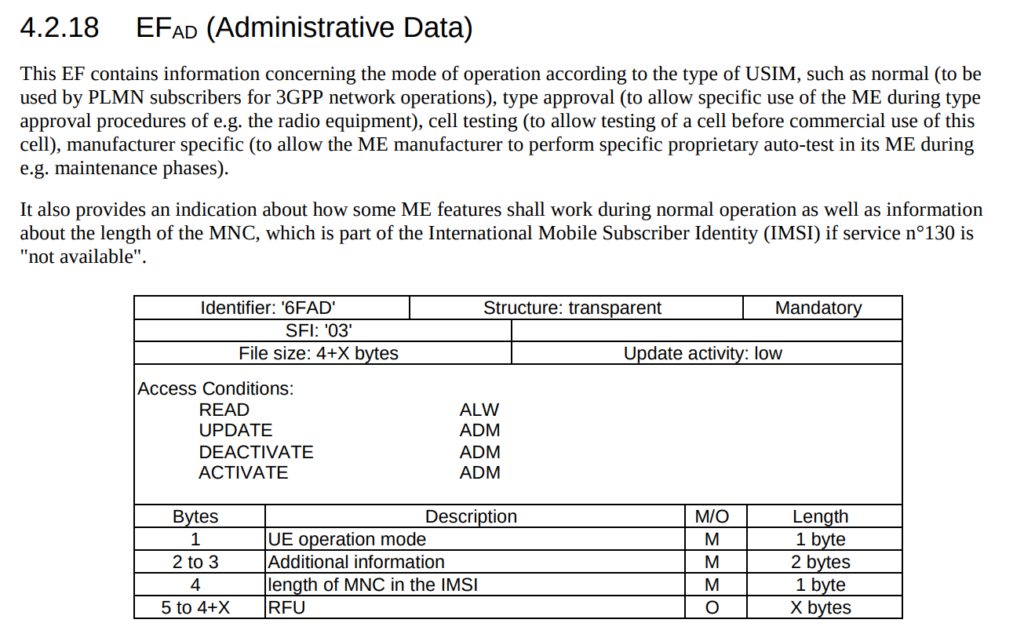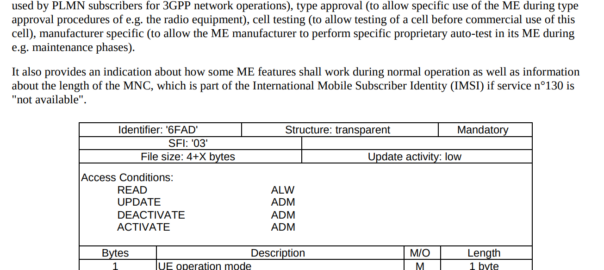Every mobile network broadcasts a Public Mobile Network Code – aka a PLMN. This 6 octet value is used to identify the network (Although this gets murky with shared codes and Private networks and when OEMs make them for codes they don’t own).
It’s made up of a Mobile Country Code followed by a Mobile Network code.
One of the guys at work asked a seemingly simple question, is the PLMN with MCC 505 and MNC 57 the same as MCC 505 MNC 057 – It’s on 6 octets after all.
So is Mobile Network Code 57 the same as Mobile Network Code 057 in the PLMN code?
The answer is no, and it’s a massive pain in the butt.
All countries use 3 digit Mobile Country Codes, so Australia, is 505. That part is easy.
The tricky part is that some countries (Like Australia) use 2 digit Mobile Network Codes, while others (Like the US) use 3 digit mobile network codes.
This means our 6 digit PLMN has to get padded when encoding a 2 digit Mobile Network Code, which is a pain, but also that by looking at the IMSI alone, you don’t know if the PLMN is 2 digit or 3 digit – IMSI 5055710000001 could be parsed as MCC 505, MNC 571 or MCC 505, MNC 57.
Why would you do this? Why would a regulator opt to have 1/10th the addressable size of network codes – I don’t know, and I haven’t been able to find an answer – If you know please drop a comment, I’d love to know.
So how do we handle this?
There are files in the SIM profile to indicate the length of the MNC, the Administrative Domain EF on the SIM allow us to indicate if the MNC is 2 digit or 3 digit, and the HPLMNwAct and the other *PLMN* EFs encode the PLMN as 6 digit, with or without padding, to allow differentiation.

That’s all well and good from a SIM perspective, but less useful for scenarios where you might be the Visited PLMN for example, and only see the IMSI of a Subscriber.
We worked on a project in a country that mixed both 2 digit and 3 digit Mobile Network Codes, under the same Mobile Country Code. Certain Qualcomm phones would do very very strange things, and it took us a long time and a lot of SIM OTA to resolve the issue, but that’s a story for another day…


Your Question: Why would a regulator opt to have 1/10th the addressable size of network codes?
At the start of GSM in Europe in the early 90’s the MNC length was restricted to just 2 digits. At a later stage also 3-digit MNCs were introduced. This was when GSM ( PCS 1900) was introduced in the US as there was a need for a larger capacity of networks under the same MCC. Up to date still many numbering plans are only slowly and carefully expanding to enable 3-digit MNCs, as there are/were concerns of technical issues when mixing 2-digit and 3-digit MNCs under the same MCC